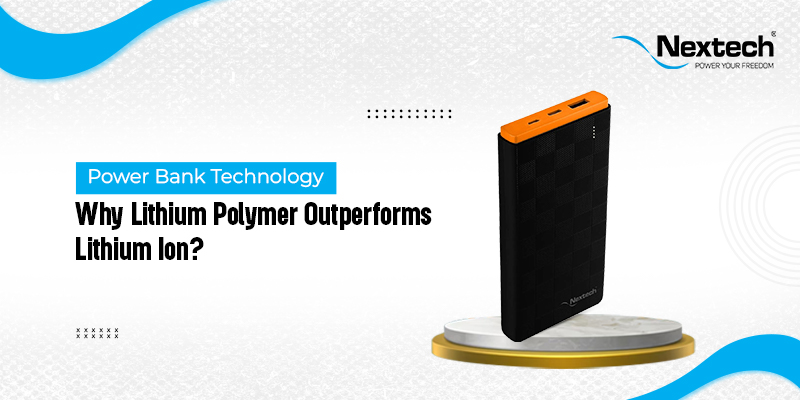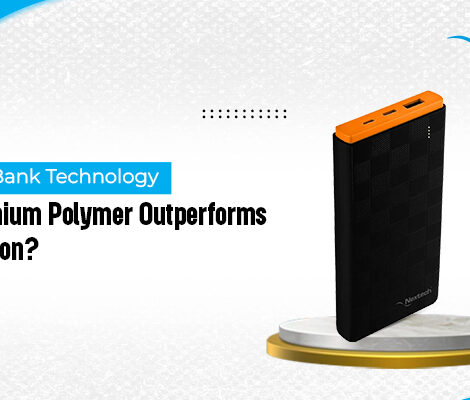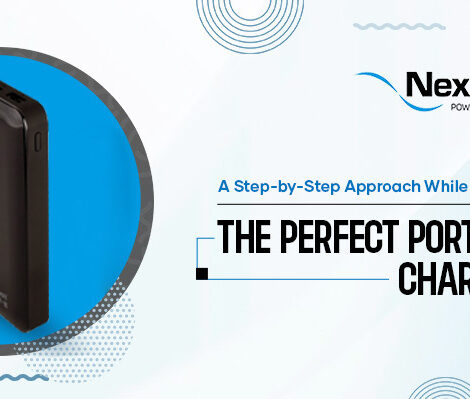Power Bank Technology: Why Lithium Polymer Outperforms Lithium Ion?
These days, smartphones, tablets, and other portable devices have become integral parts of our daily lives. However, the batteries of these devices often struggle to keep up with our demanding usage. This is where power banks come to the rescue, providing a convenient solution to keep our devices charged. Among the various power bank technologies available, two have become much more in demand in the current market: Lithium Polymer (LiPo) and Lithium Ion (Li-ion). In this blog, we will shed light on the best affordable portable charger and know more about why LiPo power chargers are a better option than Li-ion power chargers for you.
Understanding Lithium Polymer and Lithium Ion
Lithium-polymer batteries, also known as LiPo batteries, employ a gel-like electrolyte housed in flexible pouches. This design allows for a more adaptable form factor, making LiPo batteries thinner, lighter, and capable of taking various shapes to fit into compact power bank enclosures. It means you can buy the fastest portable phone charger that is easy to carry wherever you travel while airborne.
On the other hand, Lithium-ion (Li-ion) batteries feature a rigid cylindrical casing with a liquid electrolyte. While they are commonly found in many consumer electronics, they are less flexible and can be bulkier than LiPo batteries.
What Is The Difference Between LiPo and Li-ion Power Banks?
While both LiPo and Li-ion serve the purpose of keeping your gadgets charged on the go and are power banks with integrated cables, they have significant differences in terms of design and performance. Here are some distinctions between the two power bank technologies to help you make the right choices.
- Energy Density: LiPo batteries have a higher energy density compared to Li-ion batteries. This means that LiPo power banks can store more energy in the same physical space and charge devices multiple times before recharging.
- Weight and Form Factor: LiPo power banks are significantly lighter and more compact than their Li-ion counterparts. This makes them the preferred choice for users looking for a portable and lightweight charging solution.
- Safety: LiPo batteries are inherently safer than Li-ion batteries. Li-ion batteries can be prone to uncontrollable increases in temperature, where overheating can lead to fires or explosions. On the other hand, LiPo batteries have a lower risk of thermal runaway due to their flexible pouch design, which can better dissipate heat. This enhanced safety profile makes LiPo power banks a preferred choice for travellers concerned about inflight safety.
Which Power Bank Is Better And Safer To Use?
As per the information available, in the battle of Lithium Polymer (LiPo) vs Lithium Ion (Li-ion) power banks, LiPo emerges as the superior choice due to its performance and safety. LiPo power banks are not only more efficient than LI-ion but also meet the safety regulations and guidelines set for domestic and international flights. The gel-like electrolyte of LiPo power chargers not only makes it more durable but also ensures a more compact and lightweight design. LiPo power banks provide higher energy density, giving users more power in a smaller package. You can buy the fastest portable phone charger with LiPo technology and enjoy the benefits of portability and safety.
Suggested Reads: A STEP-BY-STEP APPROACH TOWARDS CHOOSING THE PERFECT PORTABLE CHARGERS
Conclusion
When selecting a power bank, it is essential to prioritize safety and performance. Lithium Polymer power banks are the clear winner in this regard. They offer a safer charging experience for your valuable devices while being the best affordable portable charger in the current market. If you are looking for universal power banks online and don’t know where to look, then your search ends here at Nextech. We are a dynamic company with a 25-year track record of leading the technology industry. Our mission is to develop innovative products that enhance the functionality of future IT devices. Visit our website today to know more about our products, designed to relieve the daily hassle of low device battery levels.



